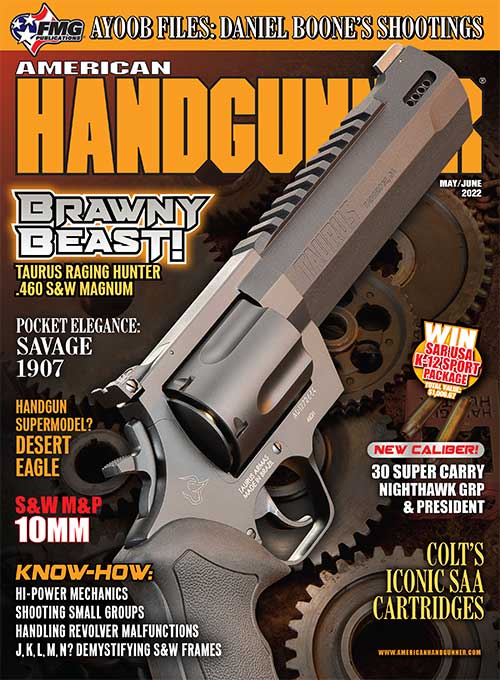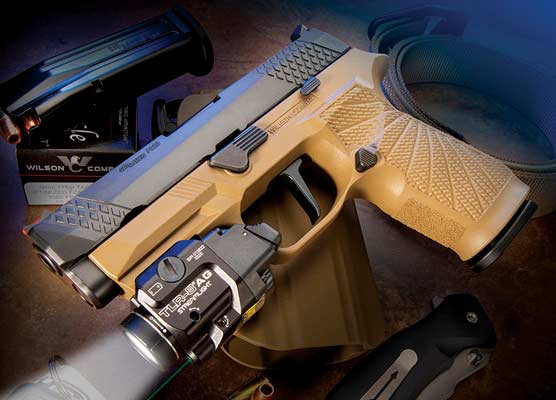Shooting Iron: Twin .32-20s
My love affair with Colt Single Action Army sixguns started in 1968. Thus far, I’ve owned over 100 of the graceful revolvers. Until recently, only one has been chambered for .32-20 (aka .32 WCF), which might sound odd because the caliber was the fourth best-selling between 1873 and 1941 during the 1st Generation of SAA production.
My aversion to .32-20 formed over 40 years ago with my very first SAA of that caliber. It was most contrary — when machine rest mounted, it would only group into about 4″ at 25 yards. Eventually, I measured its bore and chamber mouths by driving soft lead slugs through them. Cylinder chamber mouths were universally 0.310″ but barrel groove diameter measured 0.314″. This combination is a certain situation for poor accuracy from any revolver. Thusly I became soured about SAA .32-20s.
Fast forward to SHOT Show 2004. I was on the staff of a different magazine when my boss heard Colt was reintroducing SAA .32-20s in 3rd Generation (1976 to present). He asked me to obtain one for a feature article. I approached some of the three-piece suited reps standing idle at the Colt booth, presented my business card and asked about a consignment .32-20 when available. One fellow looked at my card, and then me, and said, “I’ve never heard of you, and we’re not sending you anything.” Yvonne was with me, and as we walked away, she commented, “Aren’t you mad?” I replied, “No, that guy was too stupid to care about. He’s an example of why Colt is on a downhill slide.”
Ta Da! A Revelation!
Now move on to 2021. That summer, much of my free time was spent shooting and handloading for .38-40, .41 Long Colt and .44-40 WCFs. On an Internet website’s classified section, I spotted a 3rd Generation SAA .32-20 with a 71/2″ barrel for sale at an attractive price. The owner was honest; the price was low because he’d chemically removed the frame’s case hardening colors. He did so because surface rust on the frame would deepen into pitting if left be. Since I had previous positive dealings with the seller, I bought that .32-20, figuring to use it for gathering load data for my ongoing SAA project. Its serial number dated it as manufactured in 2010.
Shooting the .32-20 was like having a window opened in a stuffy room. Its accuracy and lack of recoil felt like a breath of fresh air. No need for tedious handload development. This .32-20 shot every load combination well and others outstandingly. There was no need to check, but from curiosity, I found barrel groove diameter, and all six chamber mouths measured 0.310″. My only complaint — a minor one — is that smaller bore and chambers weigh much more than a similarly configured big bore. I compared a .45 and this .32-20 alike in every way down to fancy walnut grips. The .45 weighs 39 oz., and the .32-20 is 48 oz.
A New Passion
My new Colt so pleased me I soon sent it to my friend Bill Fuchs at Clearwater Armory in Ten Sleep, Wyo., for re-color case hardening and a set of presentation grade walnut one-piece style grips. While it was there, I instructed Bill to color case harden its hammer as that was standard at one time in SAA manufacture.
People who know me well say I’m impetuous. I say I just make decisions fast. Either way, with such positive .32-20 experience, I began a hunt for another. This time my quest was for a 1st Generation SAA with a 71/2″ barrel. Such are hard to find, but one is here now, and I’m more than pleased with it. Made in 1899, its condition is about 75%. The newer .32-20’s grips are all that keep it from being 100% original. In its website photos, the grips seemed white plastic on which someone had doodled with a felt marker. Showing the Colt to Yvonne, she exclaimed, “Wow, these are real mother of pearl.” Looking closely, it was evident someone had carved lines and curlicues then traced them with ink. There are also a set of stylized initials. Also prominent are checkered finger grooves even carved in the left side grip panel. While not a beautiful set of grips, someone went to great effort to make them personal, so they will stay on the Colt as long as I have it.
How does it shoot? Just like my 3rd Generation .32-20 bullets go right where aimed at 25 yards. Like someone separated from a loved one for a long time, I have renewed my acquaintance with SAA .32-20s with enthusiasm.
Subscribe To American Handgunner

Get More Revolver Content Every Week!
Sign up for the Wheelgun Wednesday newsletter here:








